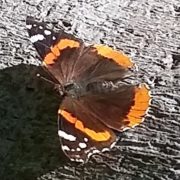5 Intention-setting Ideas to Transform Your Life!
Say ‘YES’ to you!
Saying ‘No’ to others can create an internal conflict as it challenges cultural messages that encourages and rewards our external focus. Many of us received conflicting messages as we grew up, such as that we ‘should’ help others or we will be seen as callous but if we ask for help we will be seen as weak or perhaps dependent in a culture that promotes independence as an ideal. Another conflicting message that we might grapple with inside is when people compliment you as big hearted when taking care of others but denigrate you as selfish if you take care of yourself. Such conflicting messages can hold us in a space that is ripe for symptoms of anxiety and depression to grow.
It might appear to be contradictory, yet I have learned that saying ‘no’ is actually quite freeing. It actually was a significant step in transforming my life!
Learning to embrace what is most meaningful to you will not only transform your life, but will contribute to the transformation of the world! And saying ‘Yes’ to what is most meaningful to you (and saying ‘No’ to others) is not selfish, it is SELF-CARE!
Instead of feeling like you have no control over your life and that you are moving through the world at the beck and call of others, focusing on what matters the most to you and saying no to anything that does not align with that vision will create space to transform your life into one of presence and peace.
I know it can be scary to imagine saying ‘No’ to others, especially to those that we love, so below are some ideas to motivate you to take some small steps forward on your journey of transformation:
- Create Space. When we are programmed to say ‘yes’ to any and all requests made of us, it creates a great deal of pressure to multi-task more, dividing our attention into smaller and smaller pieces that get difficult to juggle. We overcommit and move into a space of fear of disappointing others when we cannot continue to meet all of those obligations. We find ourselves always busy, yet unable to be fully present for anything. We might feel like we are constantly running on a treadmill, not sure if we are heading in a positive direction or just running in circles. Consider the most recent time you said ‘yes’ to something that you really didn’t want to do. Reflect on how much time that commitment took to complete, time that you might have done something different. What would you have done differently in that time that would have felt more fulfilling to you? When we are able to say ‘no’ to requests that don’t align with our values and passions, we create space to engage with our unique gifts that bring joy to the world through bringing more joy to us!
- Reduce Burnout. When we begin to extract ourselves from the pattern of overcommitting ourselves to others, we reduce the number of times we find ourselves in a double bind. The double bind of choosing others over choosing ourselves creates an internal stress that simmers below the surface constantly. That internal stress continues to build over time and creates inflammation in the mind and body. Eventually, that stress and inflammation presents itself as dis-ease or illness. Consider for a moment how you might recognize when your mind or body asks for a break. Do you listen to it or do you dismiss it? If you are unable to recognize when the mind and/or body ask for a break or you do, but you dismiss it on a regular basis, your body will eventually starts to show signs of it breaking down that can no longer be ignored. It is inevitable, because we are not superheroes. We are human beings with limitations and that’s okay! If you begin to reduce those ‘double bind’ spaces by saying ‘no’ to those things that drain you, you are reducing your risk of burnout and future health challenges.
- Deepen Relationships. Take a moment to think about a time when you felt fully seen, heard and known. It is in those moments that presence enveloped the connection in your relationship. The greatest gift we can give others it our presence, yet being overcommitted challenges our ability to be present. As human beings, we thrive in healthy relationships that prioritize presence through time, attention and attunement. With this knowledge, we need to accept that our time and attention are limited and, with that acceptance, begin to take steps towards tuning into our own needs and deepening the relationship with ourselves. From there, it is easier to identify those healthy relationships in our lives, where if we say ‘no’ it will be respected and recognized as an honest response. Consider practicing saying ‘no’ in one of your healthy relationships to observe their acknowledgement of your response. Perhaps your response might sound something like “I’m not able to connect with you in this way at this time as it would not allow me the space to be fully present with you, which is what I want to give you because you are so important to me.”
- Expand Respect. I would anticipate that most people value respect and want to be respected. In order to command respect, it requires us to respect ourselves first. If we don’t respect our time and boundaries, by saying ‘yes’ to all requests, then others learn to not respect our time and boundaries. Consider any beliefs you might hold that guide you to respect others by accommodating all requests, yet prevent you from accommodating requests that fulfill you. Is there a subconscious belief that if you say ‘no’ to others it is rude or disrespectful? If so, you can begin to challenge that belief by recognizing that always saying ‘yes’ informs others that your time and boundaries are open to be intruded upon.
- Find Balance. Many ancient cultures promote balance as one of the most important core values to hold. They point to nature as a reflection of that core value, highlighing how nature is perfectly balanced and, as such, is able to bend, rather than break. Perhaps take some time to sit with and reflect on such a core value. Does it resonate with you? Does it call to you? Focusing on what matters most to you, getting aligned with and living by your core values, brings balance. When we feel overwhelmed due to being constantly overcommitted, it is THE red flag of being out of balance. Learning to say ‘no’ is the first step you can take to invite more balance into your life, fostering an environment ripe for well-being that is reflected in your mental, physical and emotional health!





